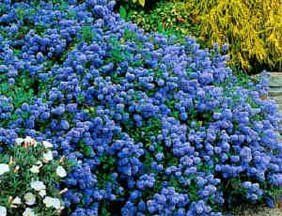It’s beginning to look a lot like Christmas around here. The community trees are lit, homes and businesses are brightly decorated and Mother Nature is soaking up that much-appreciated rainfall. Santa is looking at the list you secretly keep, and if you’ve been good, you can probably add one more request. There’s still time to get natives in the ground, so add some of these plants to your Christmas list.
The “fall planting” window lasts at least until the end of January for most plants. If your soil is workable, I’d plant most native plants now.
Most natives put down roots during the cool, wet months to prepare them for the warm, dry summer. Even a winter-dormant plant can benefit from the spring growth, if it is in the ground for that to happen.
Don’t plant in soil that is still thick, gooey mud from the rain, though. Let the soil drain a bit between storms.
Before planting, dig the hole twice as wide as the container, but no deeper. If it isn’t damp to the bottom of the hole from the rains, fill the hole with water. You might want to mix in some compost with mycorrhizals to break up your clay soil or to amend sandy soil.
It is rare that a native plant needs a fertilizer, but mycorrhizals are not fertilizer. They are living microbes that have evolved with plants. They improve a plant’s uptake of nutrients and water by enhancing the absorptive surface of the roots. They also improve the living soil.
Although most natives don’t like their roots cut or messed with, you do need to ensure that the roots aren’t circling round and round. When you remove the plant from the container, take a look at the roots. If they are circling, gently pull them out of the swirl so they can start growing out, away from the plant. Leaving the roots circling could eventually choke the plant when it matures. Water it, and then the rains will take care of the rest.
Plants can adapt to conditions that are somewhat like their native area, but they will survive poorly at best in radically different soils from what they come from. They can modify but not alter the basic nutrition available in a soil. If a plant normally grows in serpentine clay, it will not be able to grow in sandy loam unless the plant was part of that community.
Good natives to plant if you have clay soil are shrubs like coffeeberry, toyon, western redbud, flowering currant and blue elderberry.
Perennials that tolerate heavy soils are douglas iris, hummingbird sage, western sword fern, Chilean aster, foothill penstemon, yarrow and bicolor lupine.
Groundcovers and grasses to plant include woodland strawberry, California fescue, blue-eyed grass, purple needle grass and deer grass.
Those of you who live on sandy soils can ask for Nevin’s barberry, native sages, monkey flower, ceanothus and manzanitas. Some good ceanothus varieties are Tilden Park, Frosty Dawn and Joyce Coulter. You can even find some with blooms at this time of year for our resident hummingbirds. Manzanita favorites include Howard McMinn and Vandenberg,
This year, ask Santa for a California native to plant between storms.
Jan Nelson, a landscape designer and California certified nursery professional at Plant Works in Ben Lomond, will answer questions about gardening in the Santa Cruz Mountains. Contact her at ja******@*ol.com or JanNelsonLandscapeDesign.com.













